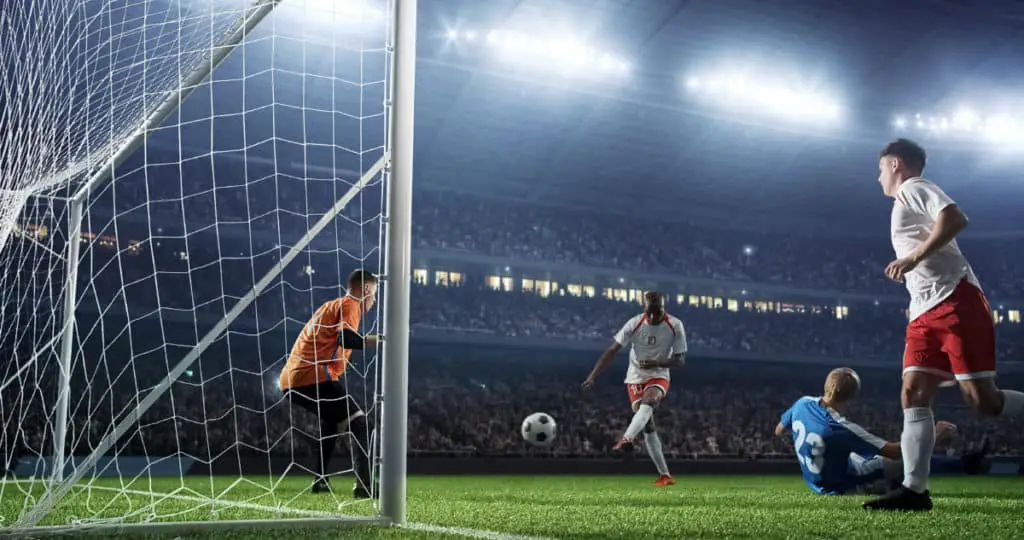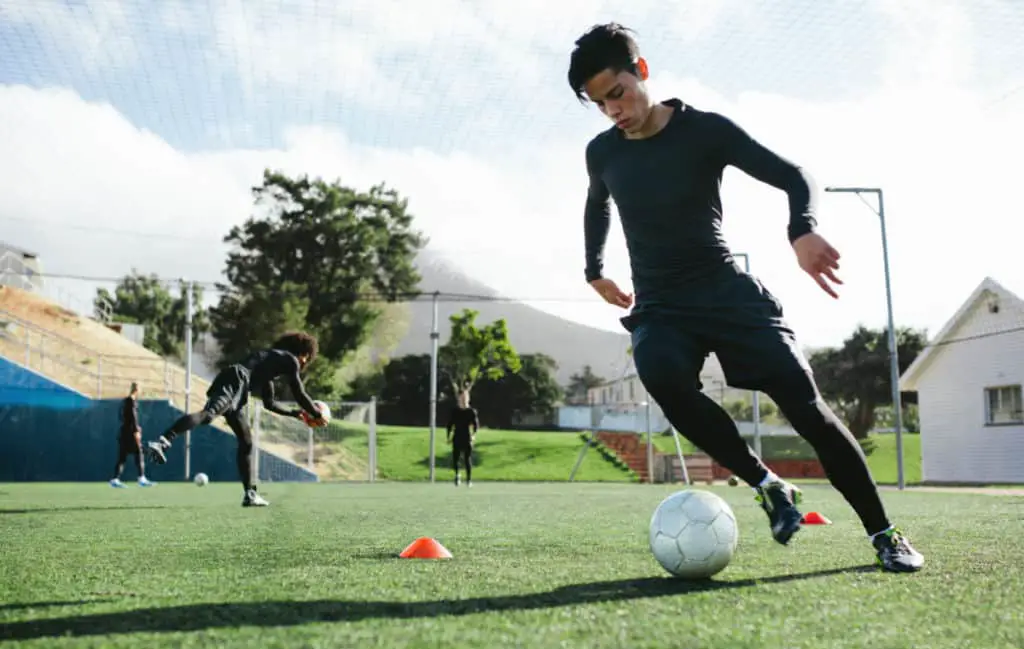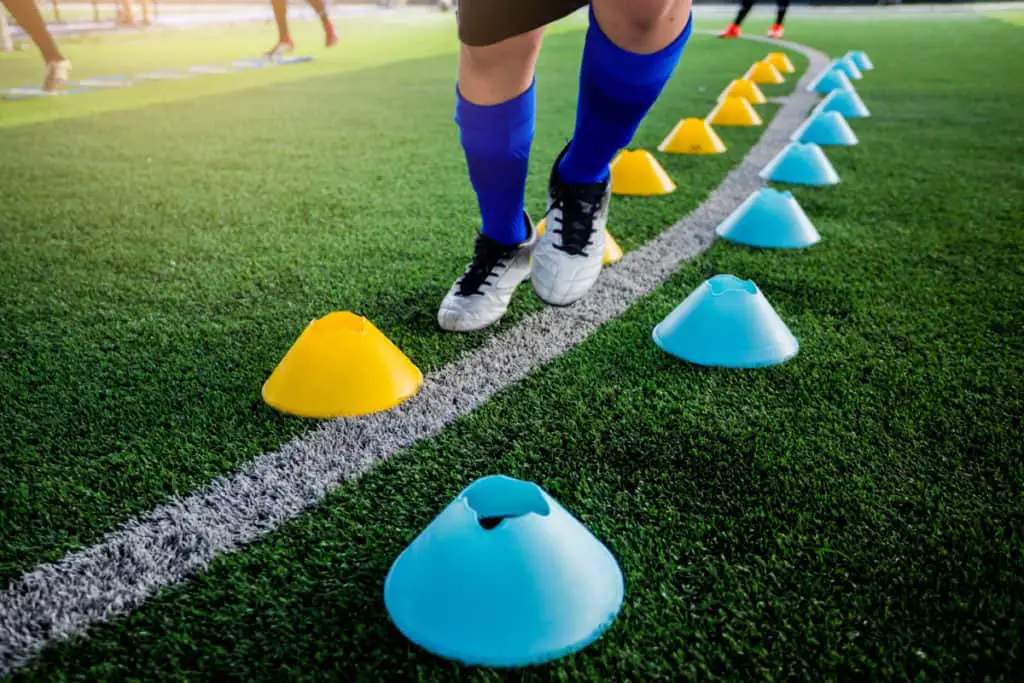Soccer is a great game for people of all ages.
It’s popularity continues to grow as a youth sport for kids in America.
More and more kids play soccer early on as a great foundational sport for footwork, agility, speed, and coordination.
One of the challenges for sports is ensuring that the field is the right size for those participating.
Are Soccer Fields Different Sizes?
Yes. At the professional level they will range from between 100 and 130 yards in length and 50 to 100 yards in width. At the youth level the fields, you can utilize a field as small as 25 yards long by 15 yards wide for the youngest soccer players. Fields at various age levels will then be somewhere between these sizes.
Soccer is a versatile game that can be played on various size fields based on the amount of players, the skill level, the age of the players, the playing surface, and the amount of overall space at the location of the field.
Over the years, certain size fields have been recommended typically based on age and the number of soccer players participating at one time on the field.
There are ideal field sizes based on the number of players on the field or the age of the player participating. Below, I will take you through these ideal sizes.
How many soccer players on the field?

7 v 7 Soccer Field Dimensions
The recommended field size is 55-65 yards in length and 35-45 yards in width. This allows enough space for the players to compete and have to control the ball. The recommended goals size is 7’ x 21’
The 7 v 7 is typically played at the 8u, 9u, and 10u levels. The game will move quickly at this level with highly skilled 10u players. The field will turn quickly and goals take place quicker than on a traditional 11 v 11 soccer field size when the players are highly skilled. The recommended bal size at this age level is a size 4 soccer ball.
These dimensions have been utilized over the years and it is a quality option for a competitive game and fun game.
9 v 9 Soccer Field Dimensions
The recommended field size is 70-80 yards in length and 45-55 yards in width. This allows enough space for the players to compete and have to control the ball. The recommended goal size is 7’ by 21’
The 9 v 9 format is typically played at the 11u and 12u levels. With highly skilled players at the 12u level, the game is compressed and elite ball handling skills are required due to the speed and skill of the defenders. Overall, players are able to develop their footwork and when they get to a larger field are prepared and ready to play. The recommended size soccer ball at this level is a size 4.
11 v 11 Soccer Field Dimensions
The recommended field size is 90-120 yards in length and 55-65 yards in width. This allows enough space for the players to compete and have to control the ball. The recommended goal size 8’ by 24’
The 11 vs 11 format is typically played at the 13u level and above. The younger the soccer player the more space the player will have because of the speed involved in the game. For the fastest and most skilled players, a 90 yard by 55 yard field will seem compressed and a higher level of foot skill will be necessary. The recommended ball size is a size 5 soccer ball.

High School Soccer Field Size
The majority of high school soccer fields will be played at just under 120 yards in length and will be around 55-65 yards in width.
They will play 11 v 11 and use a size 5 soccer ball.
With most high school soccer teams sharing a field with the football team, the goals typically sit just inside the field goal post, which are located 120 yards apart. The width on these fields will vary based on the track, which is typically around the field.
Other factors that influence how the game is played in relation to the field size is whether the high school game is played on real grass or artificial turf. The game will be faster on the artificial turn, which requires the players to have a higher level of footwork skill.
The game is more true and crisp on most artificial turf surfaces compared to a grass field. Unless the grass field is maintained at a high level, the artificial turf is a quality feature at the high school level.
Soccer Field Size vs Football
The soccer field size is typically around the same size in length (120 yards) as a football field, but is typically wide by 5-10 yards. On fields that serve a dual purpose as a soccer and football field, the length will be similar, but the width will be wider for the soccer game.
Football at the high school, college and professional levels always play on the same size field. There is 100 yards between goal lines and 120 yards between goal posts with 160 feet in width.
Soccer will be played in various sizes from 90-120 yards in width and 55-65 yards in width.
The variation in soccer field size does impact the game as different skill levels are needed based on the size of the field. The more open the field or larger the field is the more overall strength and power is needed. Where on the smaller field, agility and footwork become key skills needed to deal with a compressed field of play.

Soccer Field Size: Final Thoughts
One of the best aspects of soccer is that the game is versatile. It can be played on different size fields and the number of players can be adjusted. There are several factors to take into consideration when determining the size of the field.
The first thing to consider is the amount of space that is at a specific location. The second item to consider is the age of the players. The third thing to consider is the amount of players that will play at one time. The fourth consideration is the skill level of the players and the final consideration is the field surface (grass or turf).
Ultimately, you want to provide a safe playing surface that allows all players to have fun and use their soccer skills. The smaller the field, the more important footwork becomes. The larger the field, the more important some power and the ability to hit long passes becomes.
The people involved with youth soccer have done a great job testing out different field lengths, size of soccer balls and the number of players on the field. The game is fun for the kids as the ball is in constant motion and players are involved.
